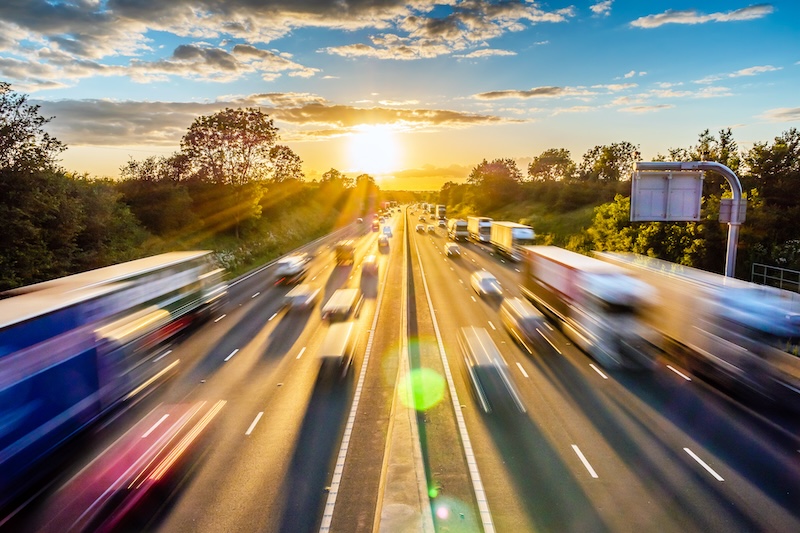10 money-saving tips to get the most out of your fuel tank

Diesel drivers will soon be feeling the pinch as new taxes are used to fund the government’s clean air plans. But petrol motorists aren’t quite off the hook as fuel prices for both increased in July for the first time since April.
Fuel efficiency often comes down to the vehicle you’re driving, so it’s important your car is in keeping with your lifestyle, work demands and annual mileage. But even if your vehicle is a diesel-guzzling monster, there are still ways you can cut down on your consumption.
1. Drive smoothly
We’ve all been in a rush to get somewhere, accelerating quickly and then braking, rather than just going with the flow of the traffic. It may make you feel like you’re going quicker, but in actual fact it’s less efficient.
Patient drivers get more to the gallon. Driving at a consistent speed stops your engine from having to over exert itself. Meanwhile, accelerating and decelerating smoothly, and only braking when necessary, are all guaranteed to save pounds on your fuel expenses.
2. Keep an eye on your tyre pressure
According to the AA, around 15% of your overall fuel consumption is attributed to the degree of resistance from your tyres as they roll along the surface of the road. This rolling resistance directly impacts the amount of fuel your car uses, with underinflated tyres significantly increasing the amount of resistance and thus the extent of gas guzzling.
Tyre classes are graded from A to G and take into account fuel efficiency, grip and resistance.
Class A tyres are the most efficient and hence the most expensive. However, the difference in savings can be as much as 7.5% more miles per gallon. Some new tyres could be a sound investment.
3. Plan your route
It’s just plain old common sense that travelling shorter distances uses less fuel. But we all fall victim to taking longer, more familiar routes rather than those that cover fewer miles.
Plan your routes carefully using route planner software or Google Maps.
4. Avoid rush hour
Stopping and starting puts a lot of exertion on your engine, meaning your fuel consumption goes through the roof.
As consistent speed uses less gallons per mile, avoiding peak traffic times is a travel no-brainer.
5. Turn off the air conditioning
Fuel efficiency is lower when your air-con is blasting and you’re travelling at low speeds, whereas at higher speeds, climate control has a lot less of an impact on your fuel tank.
If you’re stuck in slow traffic, driving through the suburbs or meandering around the city centre, try opening your windows (or sunroof if you have one), and create a breeze without costing a penny.
6. Multi–task
A cold engine actually uses a lot more fuel during the first five miles of warming up. Get more from your tank by grouping your errands together so you can avoid short trips and having to warm up your engine over and over.
7. Stick to the speed limit
Being late for an appointment makes the urge to speed very tempting. But the Energy Saving Trust warns travelling at high speeds greatly increases fuel consumption.
According to figures compiled in 2009 by the Department for Transport, an average petrol car with an engine size of 1,400 to 2,000cc will get 51.4mpg at 60mph, but only 44.8mpg at 75mph. That’s an increase of 12.8%.
The funny thing is, when you apply this to a distance of 10 miles, you only save two minutes driving at 75mph compared with driving at 60mph.
Driving at a slower speed with appropriate stopping distances will help you to use deceleration to slow down rather than your brakes, which also improves your car’s fuel consumption.
8. Keep up to date with services
When the dreaded service light comes on the dash, it can be very tempting to turn a blind eye or even wait it out until the MOT.
However, regularly changing your oil and filters, and replacing spark plugs when required, helps to keep your vehicle properly lubricated and running at optimum efficiency.
Getting a full service once a year (or every 12,000 miles, depending on which comes first), will secure the best MPG for your vehicle.
9. Reduce your car’s drag
Car designers and manufacturers work very hard at creating sleek, aerodynamic vehicles which reduce the amount of “drag”.
The drag of your car relates to how resistant it is to the air moving against it. Having your windows open when you’re driving at speed will increase the drag, pulling your car back. This isn’t great news for your fuel tank as your engine will have to work harder.
Likewise, a roof rack or car box will change the shape of your car and affect its resistance to the air. Unless you absolutely need them, store racks and boxes in the garage and only fix them onto the car when you’re going to be using them.
10. Keep the boot clear
It’s unsurprising that when you’re heavier, carrying around any extra weight will sap a lot more of your energy. This is the same for your car.
If you leave your child’s buggy, golf clubs or anything else heavy in the boot, then your car will get fewer miles to the gallon with your engine exerting itself to cart about the added bulk.
Empty the boot of everything except absolute essentials such as a spare tyre, a jack and a first aid kit. Have a clear out on the inside of the car as well, unless you’re carrying something from one place and dropping it directly at another.
Looking for a car that’s better for your pocket? Here’s our top 10 fuel efficient cars.


